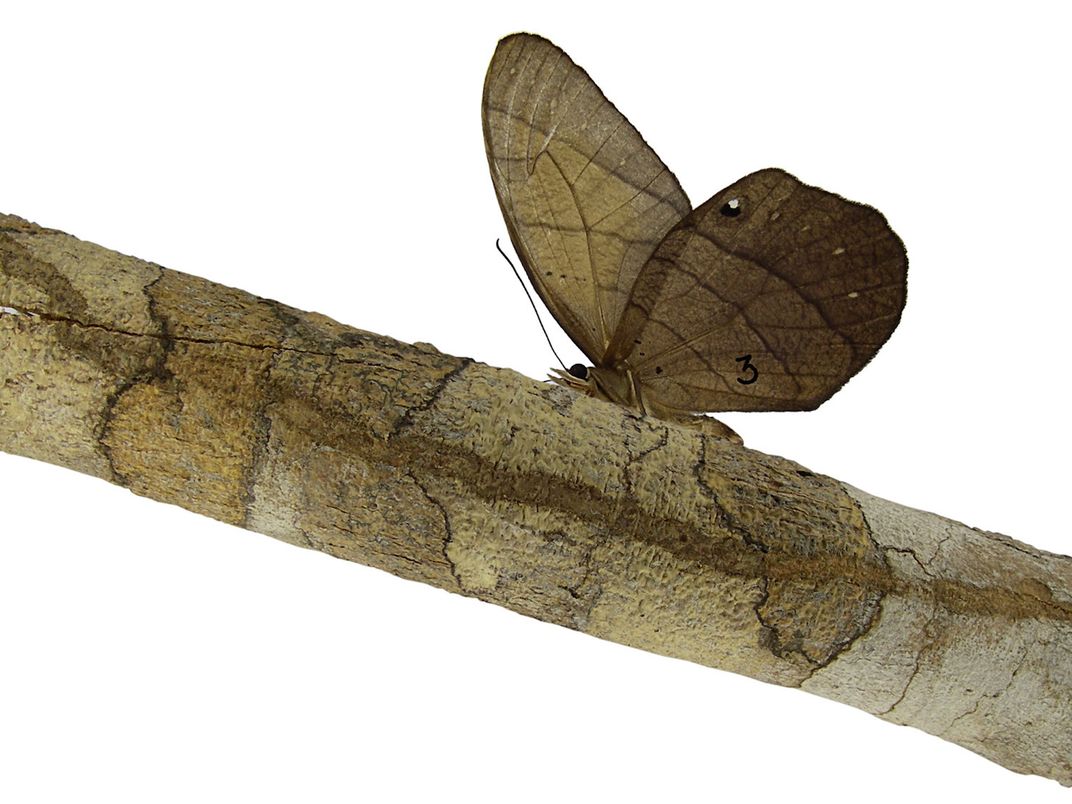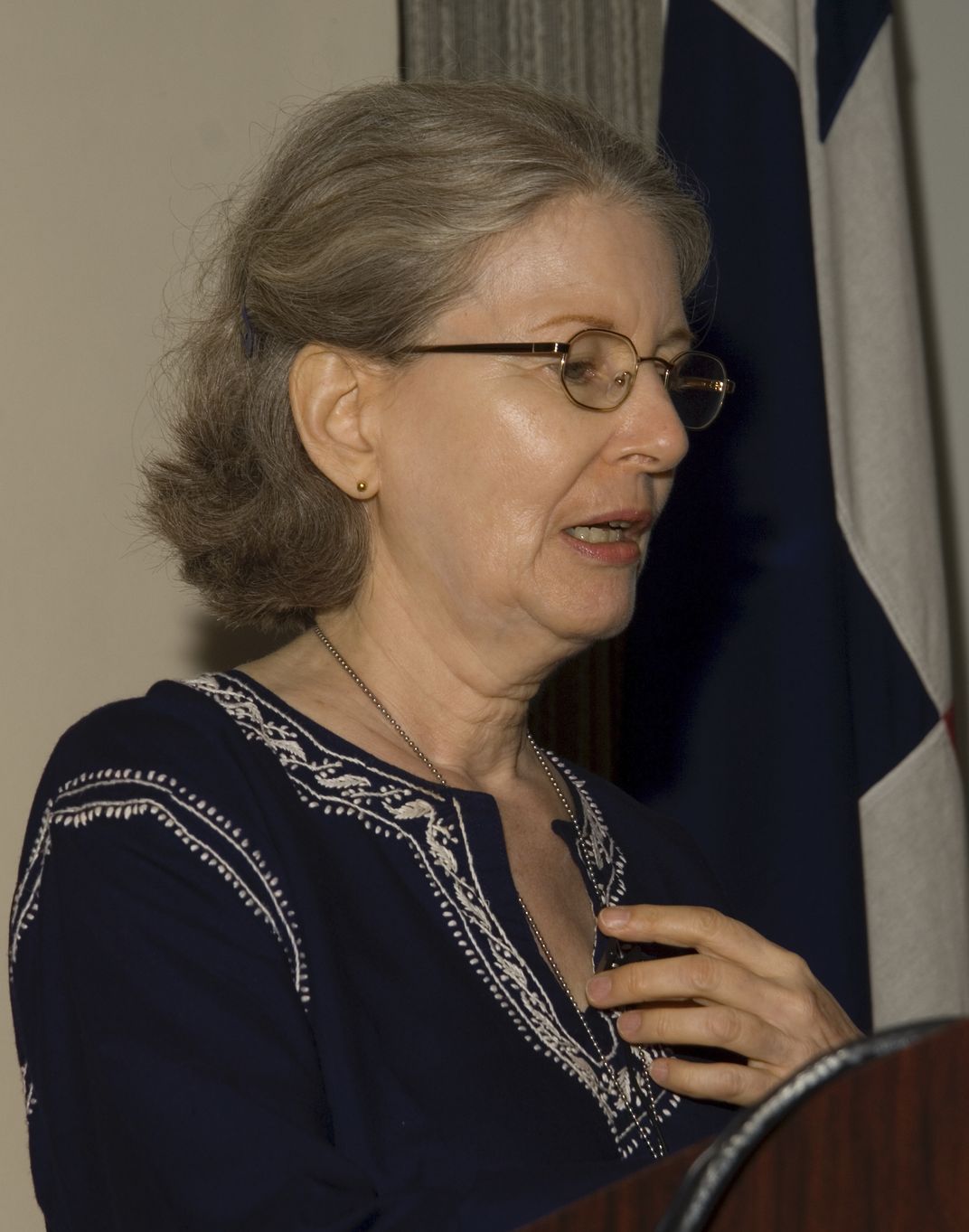SMITHSONIAN TROPICAL RESEARCH INSTITUTE
Females in Flatland
STRI butterfly researcher, Annette Aiello’s remarkable calendar (1976-present) is an accurate catalog of natural history events in Panama.
/https://tf-cmsv2-smithsonianmag-media.s3.amazonaws.com/blogging/featured/1568231556.jpg)
Pulling down a black binder from a shelf in her lab, staff scientist Annette Aiello remembers her first months at the Smithsonian’s field station on Barro Colorado Island in 1976. Each perfect square of her hand-drawn calendar holds a full day’s events, in handwriting achievable only with the nib of a 000-technical pen, and legible only through a magnifying glass. A spider monkey learns to open the refrigerator and a violent storm tumbles huge canopy trees and sends sheets of rain through the screens of the original dining hall, now long gone. She flips through the pages to an entry: “The 11th of July, 1979. It was a Wednesday…”
“1:30 sudden rain, electric and wind storm—uprooted and/or snapped off hundreds of trees on the northeast side of BCI steps. Big trees in blowdown in Lutz Ravine including the large Tabebuia we used to see from the dining hall. The Benjamin broke loose in the cove. … Three trees, Virola, Spondius and Cecropia fell on Barbour house. Triple treefall at Snyder Molino 3.5 seen by Russ Greenberg who was surrounded by lightning strikes.”

One wonders if the insects on Barro Colorado vied for Annette’s attention—hoping to be recorded for posterity. Pierella luna, the most common butterfly on island trails, would flutter up suddenly as she walked by, startling her. Then, streaking ahead, it would return, overtake, and pass her, to re-alight on its favorite stone or leaf, where it would pose week after week.
Intrigued by this phenomenon, Annette wrote individual numbers on the wings of all the butterflies she caught, and mapped trail transects on sheets of adding-machine paper, marking the locations of all the butterflies. Adults of this species live as long as 4 months, she discovered. All the streakers are male. Males spend most of their time on trails, whereas females move about the forest in search of Calathea plants to lay their eggs on. Males intercept and court the occasional female as she crosses a trail.

“Males live in lineland, courting in one dimension, whereas females live in flatland, moving about in two dimensions,” says Annette, drawing upon a metaphor from one of her favorite books, Edwin A. Abbot's Flatland, A Romance of Many Dimensions.
Males wait for a long time to court females only briefly, fluttering rapidly above them until physical contact is made. Annette observed these fleeting encounters and also succeeded in attracting courting males to paper models of the females.
Her fascination with detail—she studied photography in New York before entering graduate school in biology at Harvard—led her to note the green flash of Pierella’s drab, brown wings. The color comes from a deformation of the wing scales: a distinctive, rainbowed iridescence. Annette’s colleagues in Belgium based designs for innovative new industrial materials on this architecture.
Annette may be best known as an expert on a group of butterflies called Adelpha, a very confusing set of species—classified and reclassified for more than a century. By rearing the butterflies and carefully documenting their shapes and sizes as they metamorphose from egg to larvae to pupae, and by recording the dietary preferences of the larvae as they choose food plants, Annette gains insight into their family relationships and their evolution.
“When you live here in the tropics, you can rear the insects. When you only come down for two weeks, forget it.”

Since 1988, Annette stopped writing notes by hand, but faithfully keeps a daily record of events on her computer. “My ‘calendar’ has everything! I refer to it all the time and so do other people,” she says. Staff scientist Don Windsor, whose office is two doors down asked her about a collecting trip to Guna Yala twenty years ago, “I printed out those couple of days for him. It records the insects we collected, the sites we visited and what we had for lunch. He was impressed. He said it was the most amazing thing he’s ever seen.”
Find out more about Annette Aiello and the Smithsonian Tropical Research Institute.

